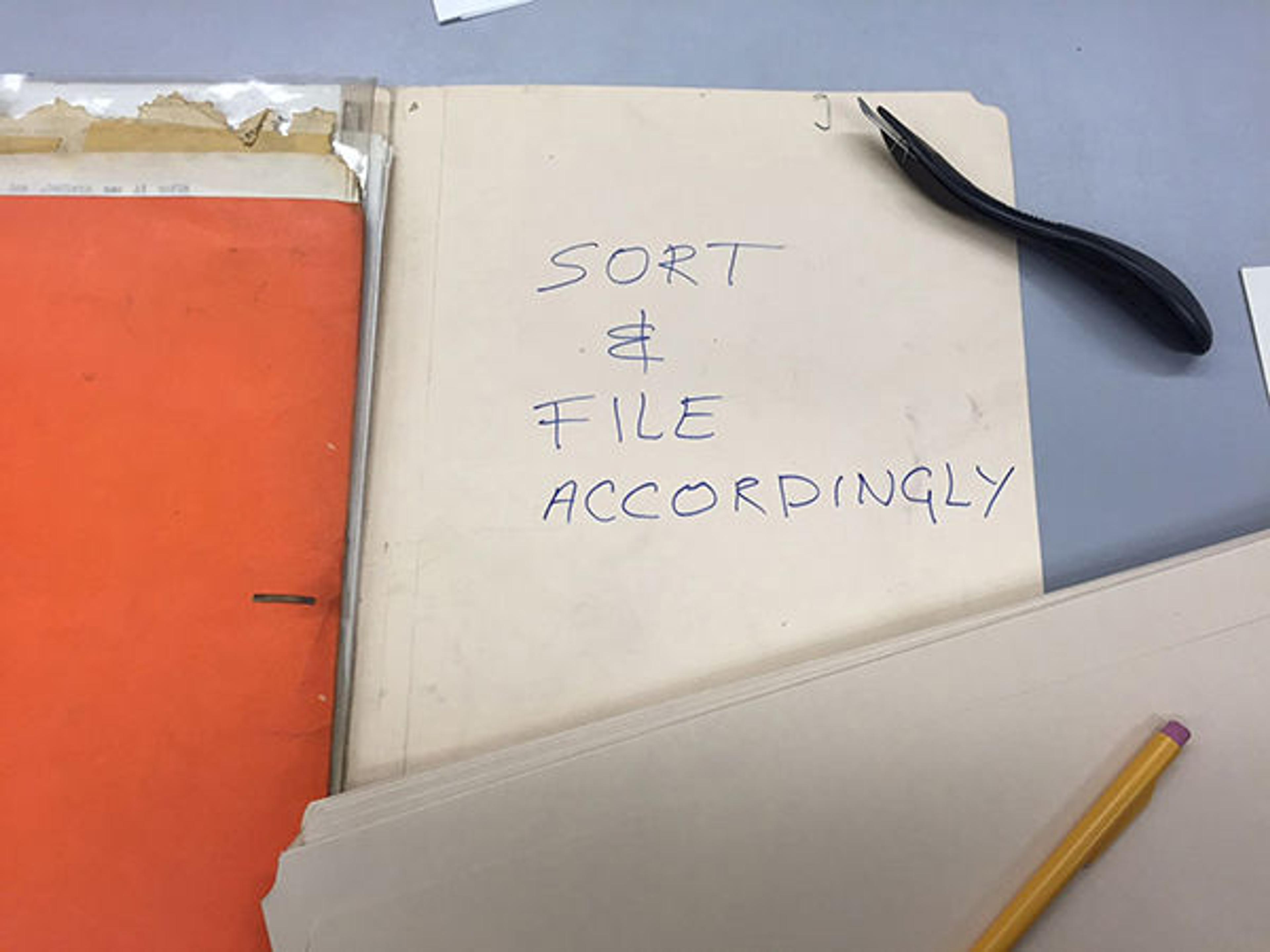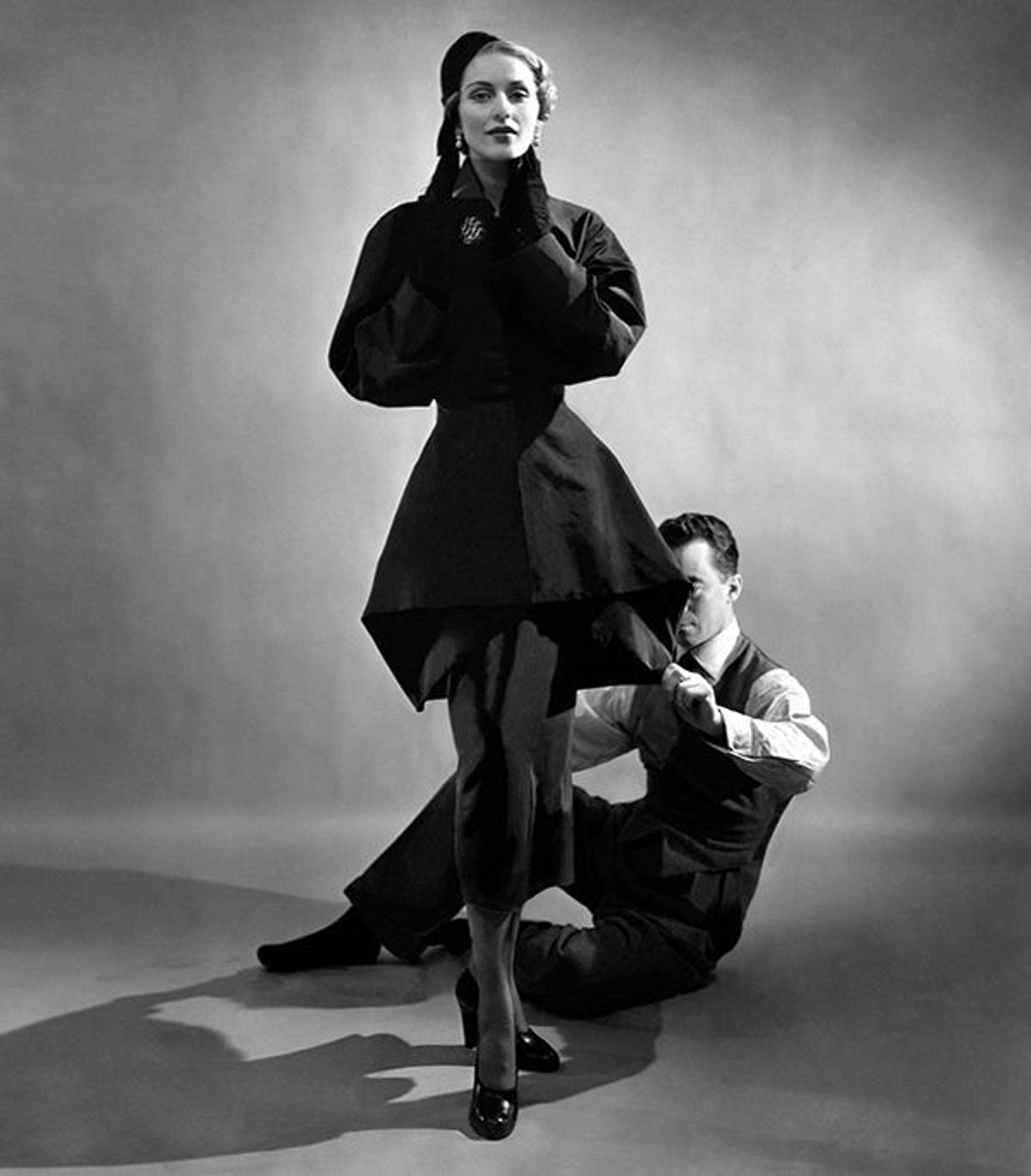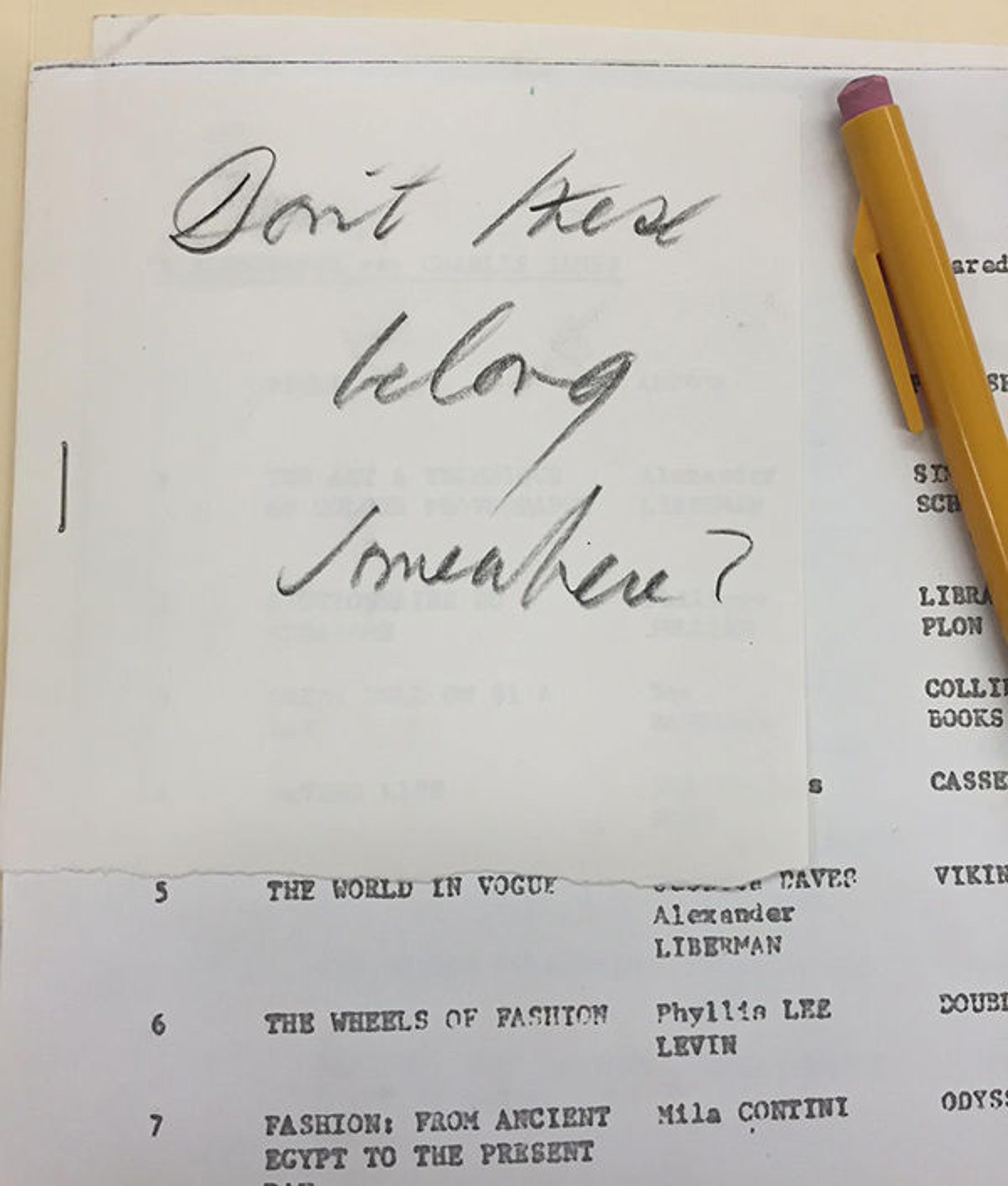A Work in Process: The Charles James Papers

Charles James, 1952. Photograph by Michael A. Vaccaro / LOOK Magazine Photograph Collection, Library of Congress, Prints & Photographs Division, Look Job 52-1129 Frame-18
«Charles James, widely considered America's first couturier, died in September 1978, leaving behind a trove of archival material self-consciously amassed in his Chelsea Hotel apartment during the final decades of his life. This archive—which includes business and personal correspondence, photographs, press clippings, and ephemera—was acquired by The Metropolitan Museum of Art in 2013 from James's former student and assistant Homer Layne, complementing the 2009 gift of the Brooklyn Museum's Costume Collection and making the Met's James holdings the most comprehensive collection of a fashion designer's work held by a museum.»
Selections from the archives were featured in the 2014 Costume Institute exhibition Charles James: Beyond Fashion and its accompanying catalogue, but the papers have not otherwise been accessible to researchers. Here's where the Met's processing project comes in. For the next two years, two professional archivists, in consultation with staff from The Costume Institute, will arrange, describe, and rehouse the James papers, with the goal of making them easily usable by scholars, graduate students, designers, and others interested in studying the James legacy. At the end of the project the James papers will be open for research onsite at the Museum and a finding aid will be published online, similar to those for other collections held by Museum Archives.

File folder from the Charles James Papers. Photograph by author
The papers are a fascinating challenge for the archivist: vast (approximately two hundred linear feet), of all shapes and sizes, and with little discernible order. While much of the collection is in reasonably good physical condition, many hundreds of pages are torn, dusty, dirty, moldy, or were subject to past roach and vermin infestation. The papers include everything from correspondence and photographs, audio, and film recordings, to paper dress patterns, press clippings, sketches and drawings, desk tchotchkes, sewing needles and pins, jewelry, and more. James apparently did not draw clear lines between business and personal matters, and while he and a rotating cast of assistants employed various organizational schemes, they were bespoke, opaque, and inconsistent—not unlike their creator.

Charles James with Model, 1948. Photograph by Cecil Beaton, Beaton / Vogue / Condé Nast Archive. Copyright © Condé Nast
An autodidact who started his career in millinery, molding hats right on his clients' heads, James obsessively created dynamic garments from the 1920s into the 1970s. He approached his work with the eye of a sculptor or an engineer, creating pieces that were always designed to enhance the woman's body, sometimes with internal shaping. Always seeking new materials, he is credited as one of the first to use zippers, heat-set plastic boning, and down feathers in a fashion context. James influenced Christian Dior's "New Look"; ran Elizabeth Arden's fashion floor; dressed such figures as Millicent Rogers, Austine Hearst, and Gypsy Rose Lee; and produced some of the most expensive and painstakingly crafted garments in the world.

Charles James Ball Gowns, 1948. Photograph by Cecil Beaton, Beaton / Vogue / Condé Nast Archive. Copyright © Condé Nast
Although James clearly had a natural talent for dressmaking, he was arguably less successful in managing his business affairs. In the late 1950s, after a failed licensing agreement with the Seventh Avenue manufacturer Samuel Winston, a lawsuit and countersuit awarded James twenty thousand dollars but left his reputation in tatters. Over the next two decades he turned his back on the industry, focusing instead on writing and teaching, as well as securing his legacy.

A glimpse inside a file folder from the Charles James Papers. Photograph by author
With such a rich fabric to pull from, the Charles James Papers offer many interesting entry points for scholars. As Museum Archives continues to prepare the collection for research, we will publish additional blog posts highlighting key figures and themes in James's world, including Bill Cunningham, Christian Dior, Salvador Dalí, Halston, Diana Vreeland, Cecil Beaton, Austine Hearst, and others; Manhattan's Chelsea neighborhood and the iconic Chelsea Hotel in the 1960s and 1970s; a look at what it's like to process the papers of a self-archivist; and more. Stay tuned!
Related Link
In Circulation: "Beyond the Exhibition: Researching Charles James Using Electronic Resources" (July 16, 2014)
Caitlin McCarthy
Caitlin McCarthy is an assistant for archival processing in the Museum Archives.